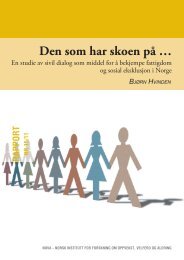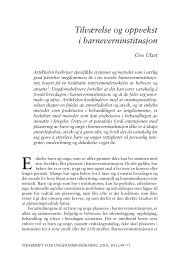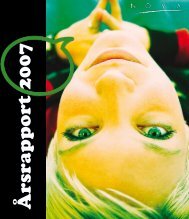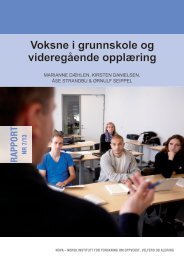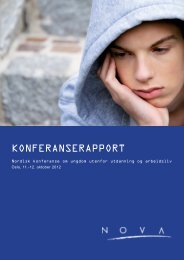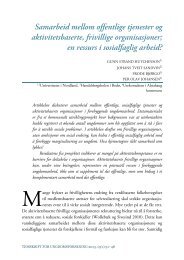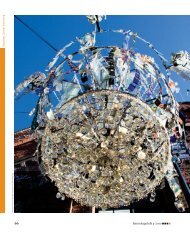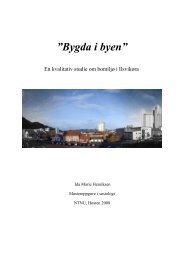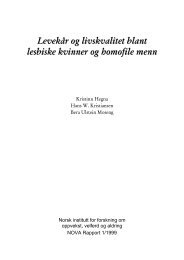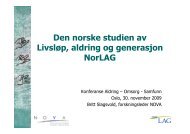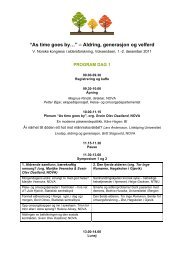Parents' socioeconomic status and children's academic ... - Nova
Parents' socioeconomic status and children's academic ... - Nova
Parents' socioeconomic status and children's academic ... - Nova
You also want an ePaper? Increase the reach of your titles
YUMPU automatically turns print PDFs into web optimized ePapers that Google loves.
4.1.1 Parents’ education level <strong>and</strong> children’s <strong>academic</strong><br />
achievements<br />
Descriptive statistic of the parents’ education level<br />
The source of data on parental 4 education levels is data registered at Statistics<br />
Norway (SSB) for the year 2004. Education data for 4 per cent of the<br />
mothers <strong>and</strong> 14 per cent of the fathers are missing. Parents’ registered<br />
education levels are categorized into nine categories: no formal education,<br />
primary school, lower secondary, three years of upper secondary, one to four<br />
years at university, more than four years at university, <strong>and</strong> ‘not registered’ 5<br />
education level. In this study, I group these levels into three categories:<br />
1. Basic education: the aggregate of the three first categories. This category<br />
encompasses those who completed compulsory education or<br />
lower (0-9 years). The share with no formal education is relatively low,<br />
1.6 per cent of the mothers <strong>and</strong> 0.7 per cent of the fathers, <strong>and</strong> has<br />
been added to this first category<br />
2. Secondary education: those who have completed all or part of upper<br />
secondary education (10-12 years), <strong>and</strong><br />
3. Higher education: college or university education.<br />
The share whose education is ‘not registered’ is 4 per cent for the fathers <strong>and</strong><br />
5 per cent for the mothers. By analyzing their job type <strong>and</strong> country of origin,<br />
it is seen that the vast majority of these parents have unskilled jobs. 64 per<br />
cent of those whose education is not registered are non-western immigrants,<br />
28 per cent are western immigrants <strong>and</strong> 8 per cent are Norwegian. Such a<br />
high percentage of immigrants in this category comes as no surprise since<br />
immigrants may in some cases have been unable to document their education,<br />
or the Norwegian education authority does not recognise their education<br />
level. These factors make it difficult to figure out the education level<br />
of this category. They are therefore added to the ‘missing category’.<br />
4<br />
Both biological- <strong>and</strong> step-parents.<br />
5<br />
‘Not registered’, here, means not registered at SSB, while ‘missing’ means missing<br />
due to technical problems.<br />
– Parents’ <strong>socioeconomic</strong> <strong>status</strong> <strong>and</strong> children’s <strong>academic</strong> performance – 27




